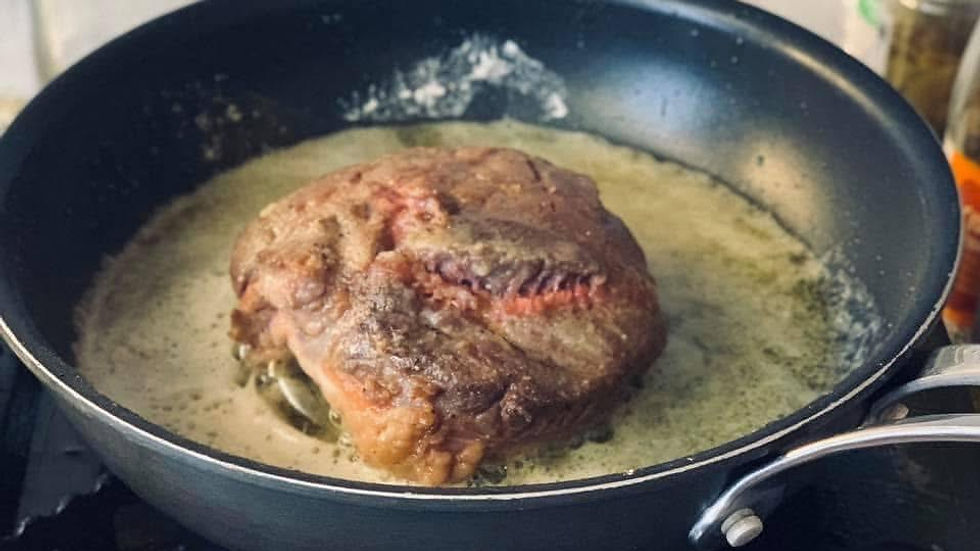
Discovering the Rich Flavors of Ox Cheek Daube: A Provençal Delight
- Anita-Clare Field

- Sep 23
- 3 min read
Updated: Oct 6
The History of Daube
Daube, one of Provence’s most celebrated dishes, traces its origins back to ancient Roman times. Slow-cooking tough cuts of meat in wine was a practical necessity for those early cooks. The name "daube" derives from the Provençal word “daubo,” meaning stew. It also references the cooking vessel known as a “daubière,” a distinctive pot that became synonymous with this rustic delicacy.
Ox cheek daube emerged during the medieval period. Resourceful French cooks discovered that the often-discarded cheek meat, when braised slowly with wine and aromatics, transformed into an incredibly tender and flavorful dish. This economical approach to cooking reflected the peasant tradition of using every part of the animal. They turned humble ingredients into something extraordinary.
The dish gained prominence in the 18th and 19th centuries throughout southern France, particularly in Provence and the Rhône Valley. Each region developed its own variations, but the fundamental technique remained unchanged: long, slow cooking that breaks down tough connective tissues into rich, gelatinous goodness.

Ingredients for Ox Cheek Daube
To create this delightful dish, gather the following ingredients:
900g ox cheeks, trimmed
1 bottle red wine (Côtes du Rhône preferred)
2 carrots, cut into batons
1 parsnip, cut into batons
1 onion, chopped
A handful of pearl onions
4 garlic cloves
2 bay leaves
Fresh thyme sprigs
1 orange peel strip
2 tbsp olive oil
Salt and black pepper

Method to Prepare Ox Cheek Daube
Marinate the Meat: Start by marinating the ox cheeks in red wine overnight. Add the herbs and vegetables to enhance the flavor.
Prepare the Meat: The next day, remove the meat from the marinade and strain the marinade to separate the solids.
Brown the Cheeks: In a large pot, heat olive oil over medium heat. Brown the cheeks on all sides to develop a rich flavor.
Combine Ingredients: Return the vegetables to the pot. Pour in the strained marinade and bring the mixture to a gentle simmer.
Slow Cook: Cover the pot and place it in a preheated oven at 160°C. Cook for 3 to 4 hours until the meat is fork-tender.
The result is a deeply satisfying dish that embodies centuries of French culinary wisdom. It proves that the best flavors often come from patience and tradition.
The Joy of Sharing Daube
Sharing a meal like ox cheek daube is a wonderful way to connect with loved ones. The rich aroma fills the kitchen, inviting everyone to gather around the table. As you serve this hearty dish, you not only nourish the body but also the spirit.
Imagine the smiles as your guests savor each bite, discovering the layers of flavor that come from the slow cooking process. The tender meat, infused with wine and herbs, creates a memorable dining experience.
Conclusion
In conclusion, ox cheek daube is more than just a meal; it’s a celebration of history, tradition, and the joy of cooking. This dish reflects the heart of Provençal cuisine, where simple ingredients come together to create something truly special.
Whether you are preparing it for a family gathering or a special occasion, this dish will surely impress. So, gather your ingredients and embrace the art of slow cooking. You’ll find that the effort is well worth it, resulting in a dish that warms the heart and delights the palate.
If you’re looking for more culinary inspiration, consider exploring local dining experiences that highlight the beauty of seasonal ingredients and traditional cooking methods.





Comments